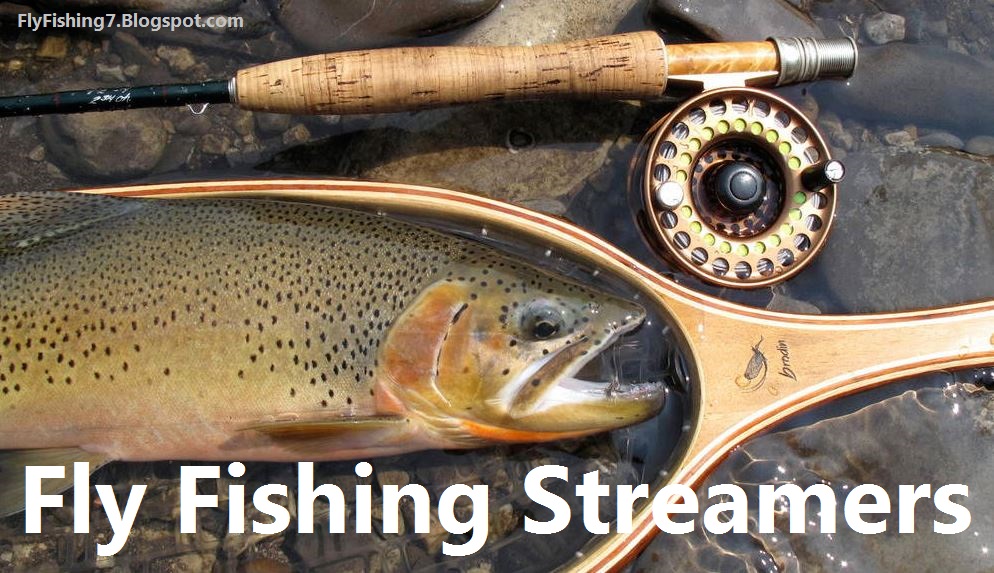Fly Fishing Streamers: A streamer is the simplest way to catch a large fish on a fly. Because these fly fishing flies are designed to imitate small baitfish that larger fish feed on, many streamers are larger than other types of flies. Learn about some of the most common streamer fly patterns.
Also Read: Fly Fishing | Best Fly Fishing Flies
STREAMER FISHING BASICS
Fly fishing streamers can catch fish in streams and rivers if you can cast 20 feet. You can even strip line off the reel and into the water while streamer fishing to let your streamer flies drift in the current and catch fish. The line swims the fly, giving it the appearance of a swimming baitfish. Casting streamers like Woolly Buggers into moving water will elicit strikes from hungry fish.
Attach a split-shot to the leader just ahead of the fly to improve the action, and give the fly rod tip a bounce now and then as the streamer drifts downstream. The tip of the fly jigs up and down like a wounded minnow, and all gamefish are predators of wounded baitfish.
Large saltwater or freshwater fly fishing streamers necessitate the use of larger fly rods, such as 7-weight, 8-weight, or larger rods. The bigger the fly, the bigger the fish, and the bigger the fly rod you'll need to cast and fight the fish (small flies can also catch large fish).
BAIT FISH FLY FISHING STREAMERS
When planning a streamer fishing trip, consider which baitfish the larger fish feed on and where you will fish. For example, if you're fly fishing for bass in a stream where the bass primarily eat crayfish, you'll need a fly that resembles a crayfish. However, if silver-colored minnows are their primary food source, you should use a silver minnow streamer.
When going streamer fishing, first determine which baitfish the larger fish feed on and where you will fish. For example, if you're fly fishing for bass in a stream where the bass primarily feed on crayfish, you'll need a fly that looks like a crayfish. However, if silver-colored minnows are their primary food, you should use a silver minnow streamer.
While the fly line will swim the fly in moving water, it will not swim it in still water such as ponds and lakes. There, you must swim the fly by casting and retrieving it. The farther you can cast, the longer your retrieve of the fly and the more fish you'll catch.
Different fly lines retrieve the fly at different depths in the water. For example, a floating line will fish and retrieve the fly near the surface. However, if the fish are deep, you must get the fly deep to catch them. In that case, a sinking line is the best fly line for streamers.
Also Read: Fly Fishing | Aquatic Fly Fishing Insects
FLY LINE WEIGHT
Water is heavier than sinking lines. The heavier the line, the faster it sinks (Type 1 or I sinks the slowest and Type 5 or V sinks the fastest). To reach bottom with the streamer in deep or fast-moving water, a Type V line is required. You'll need a floating line or a Type I in slow-moving, shallow water. On lakes, an intermediate line or a Scientific Anglers Uniform Sinking line are excellent for fly fishing streamers beneath the surface.
Fly fishing a streamer in a pond or lake is simple: cast and retrieve it with a slow hand-twist retrieve, or simply let it swing and follow behind the boat or float-tube as you move. The rest will be done by the fish.
When streamer fishing, simply cast the streamer across the current and let the current take it downstream. The majority of your strikes will occur at the bottom of your swing. When fishing from a boat, cast toward the bank and retrieve quickly. Bass and trout will pounce!
Also Read: Fly Fishing | Fly Fishing Starter Flies
OTHER FLY FISHING FLIES
Fly fishing streamers can be very effective when attempting to catch larger fish on the water. However, don't forget to use other types of fly fishing flies, such as dry flies and nymphs, to catch the most variety of fish. The chart below shows a list of classic patterns for dry flies and nymphs.









0 Comments